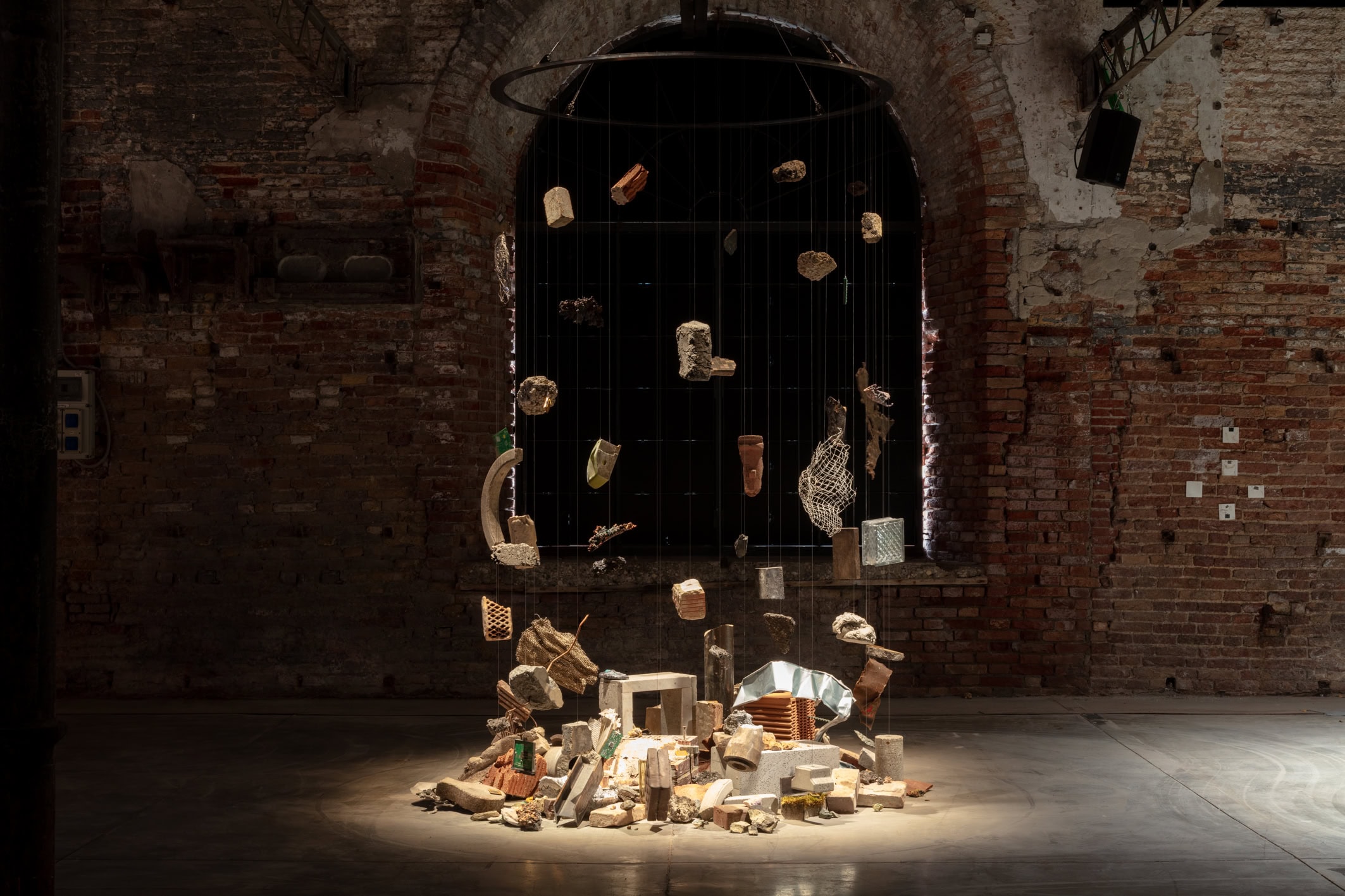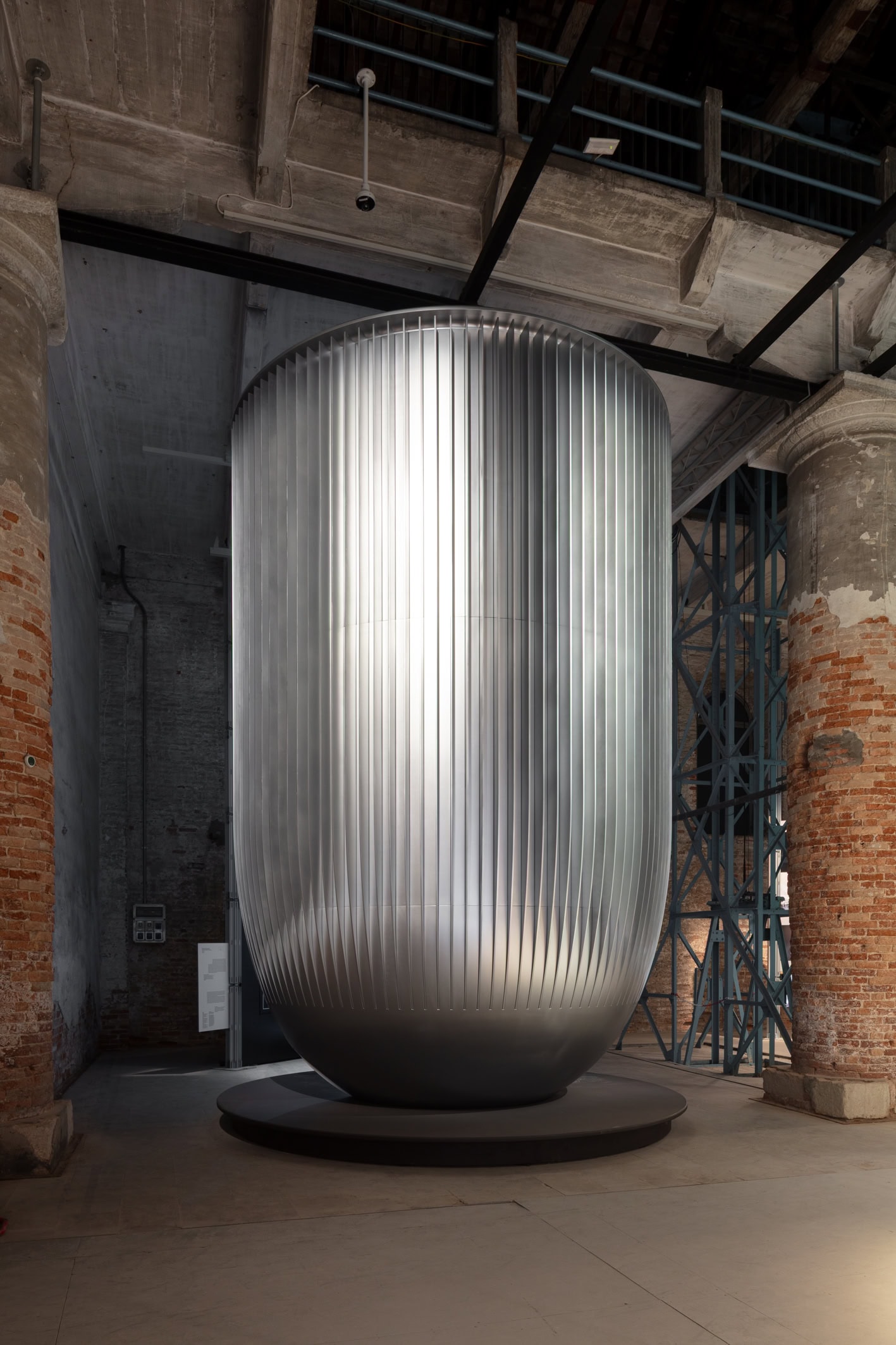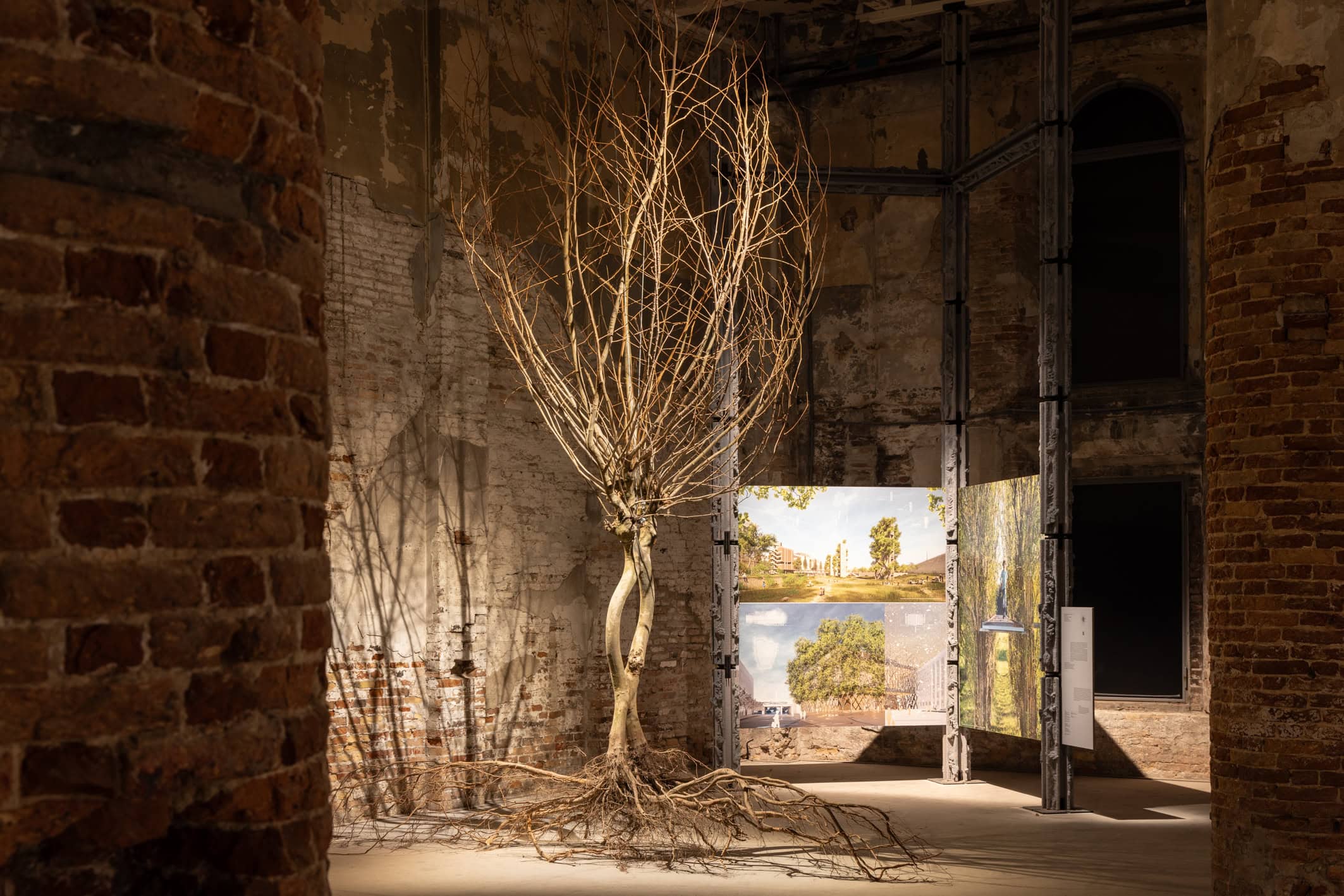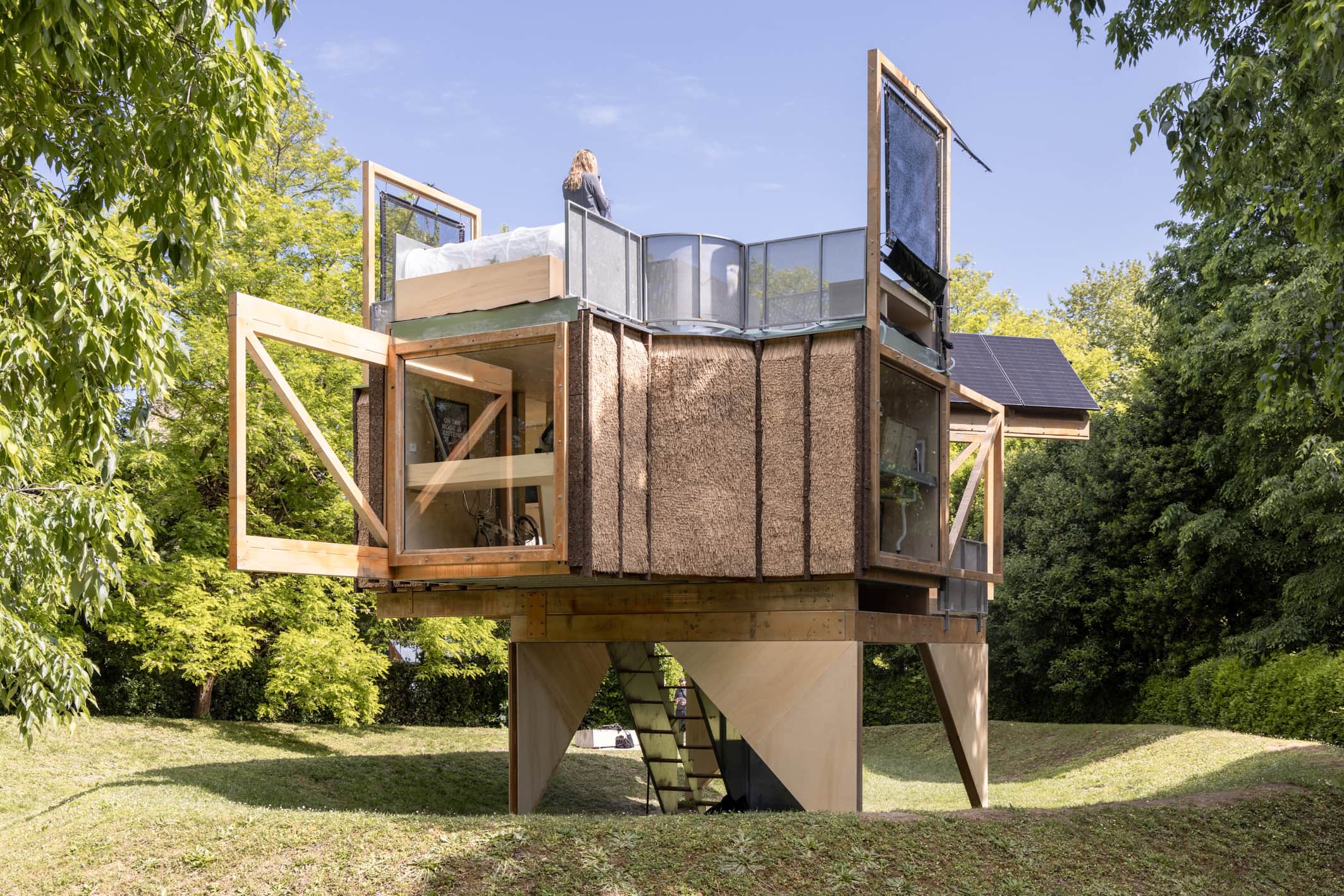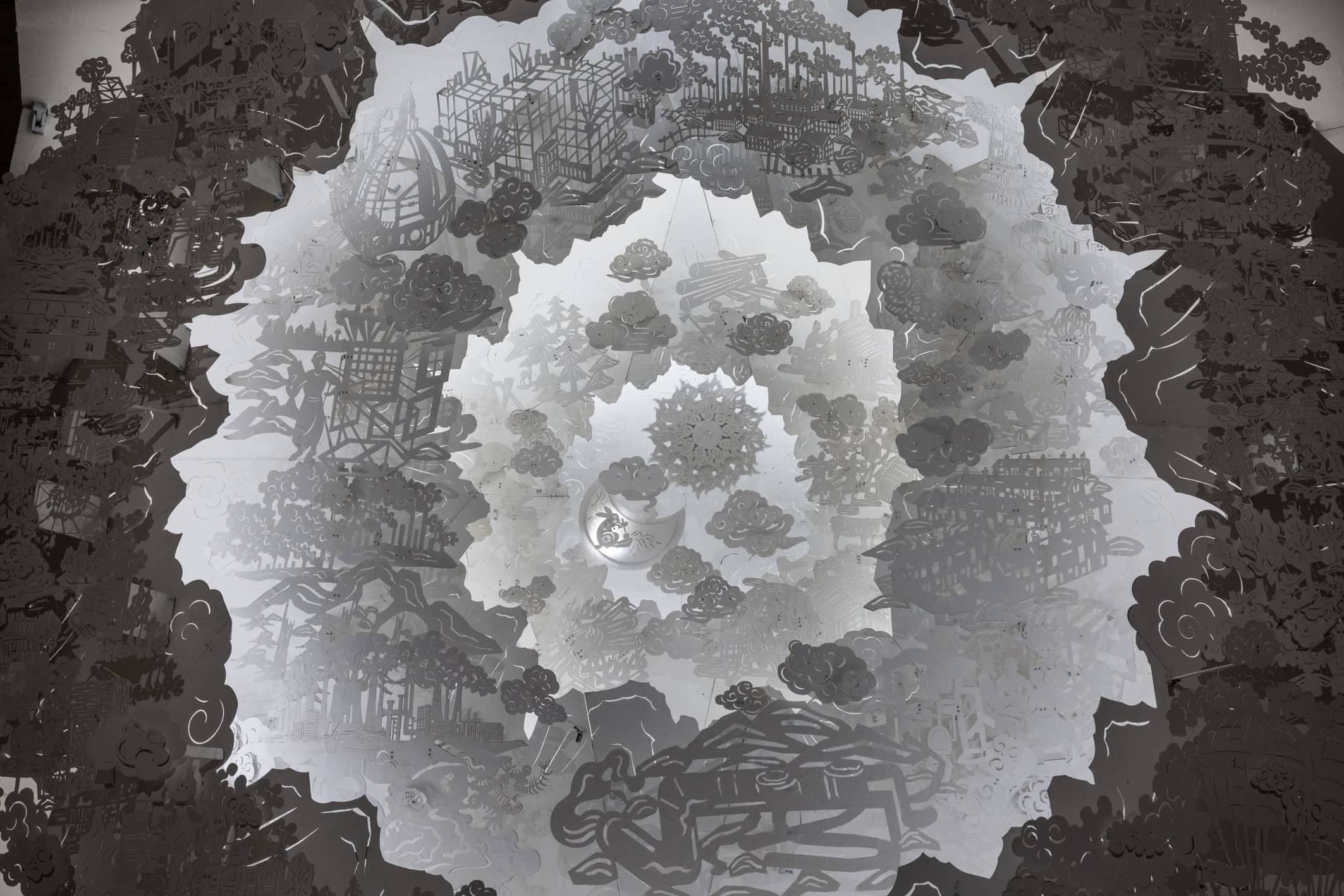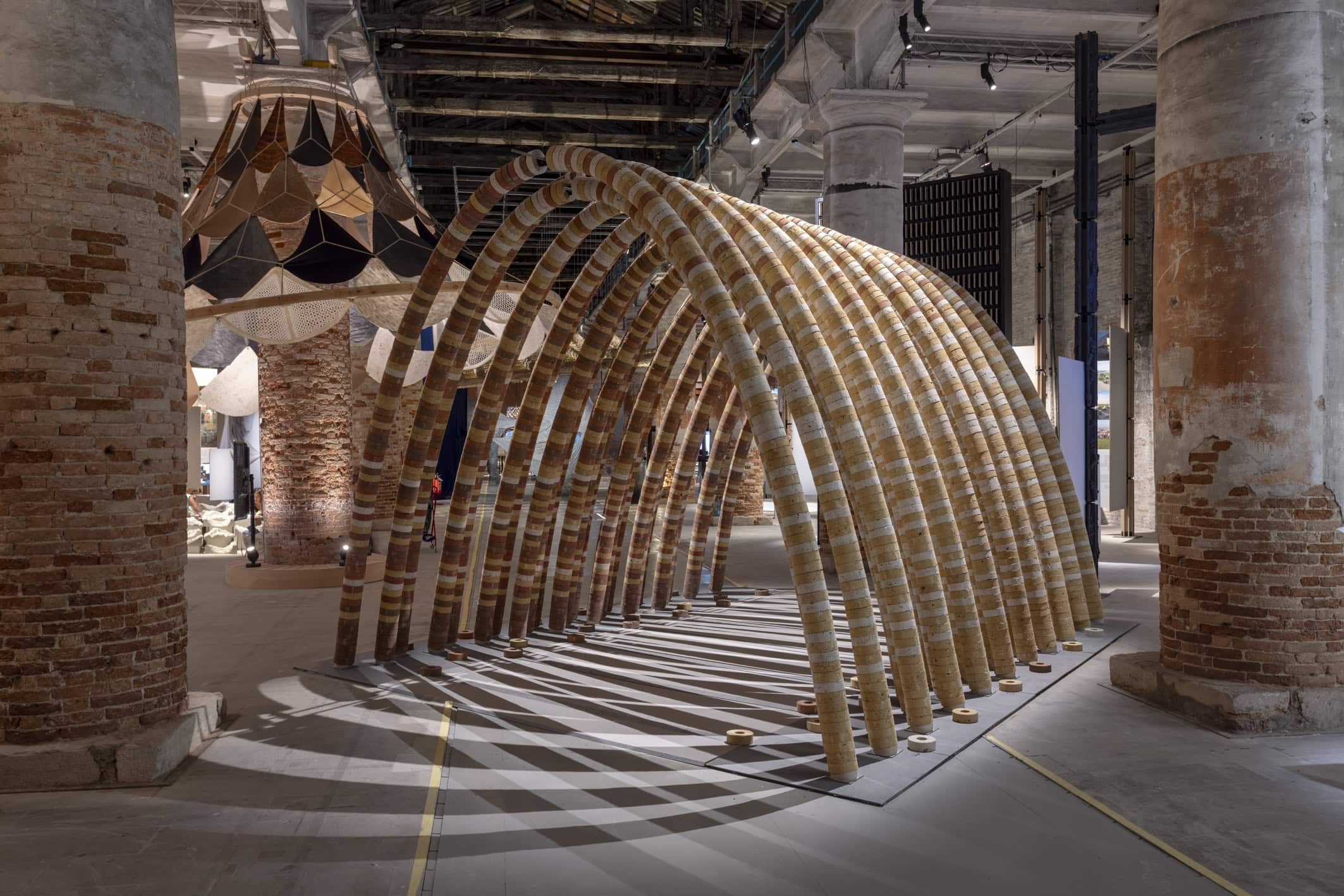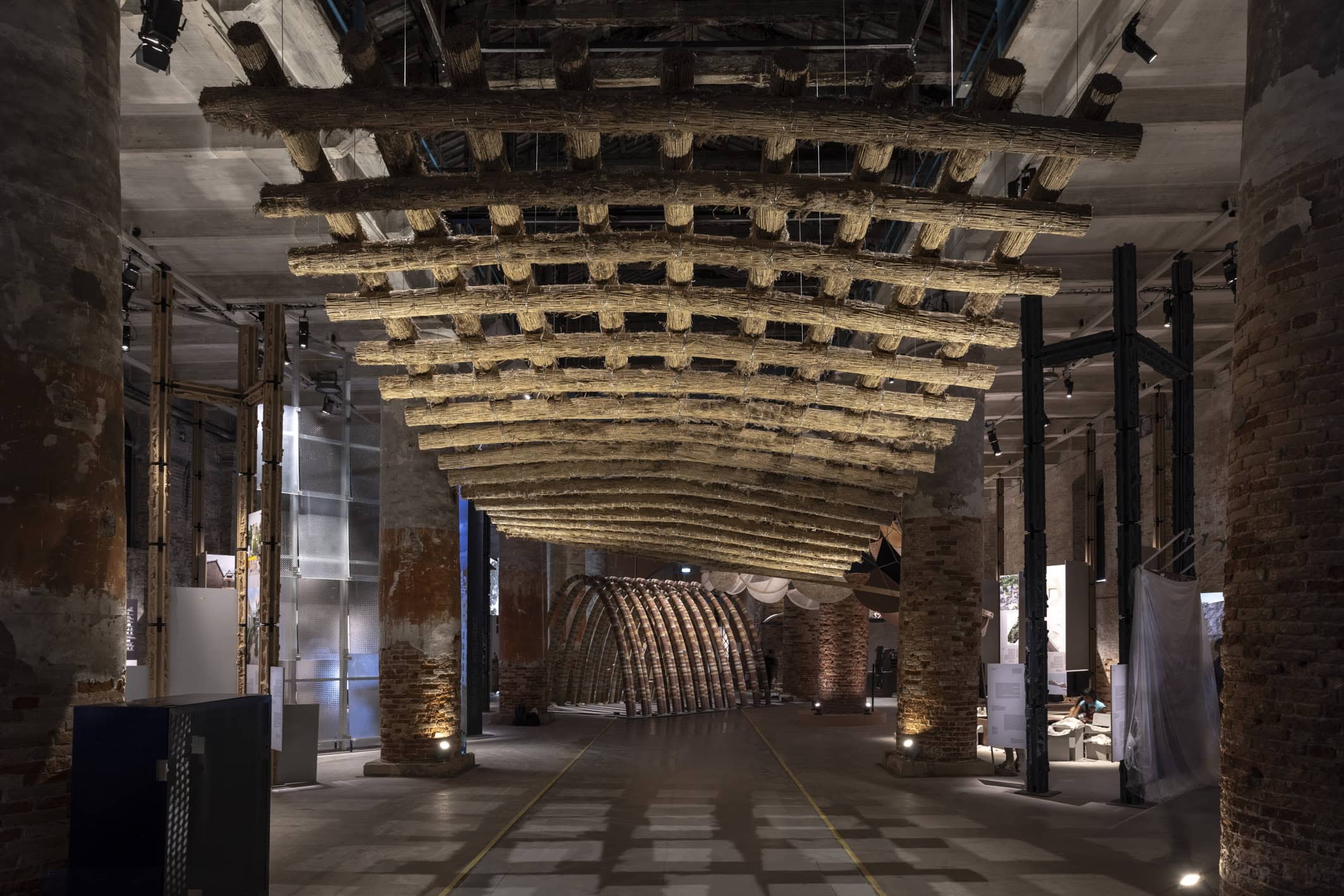The 2025 Venice Architecture Biennale, Intelligens: Natural, Artificial, Collective, which opened to the public on May 10, invites reflection on a new convergence of elements – natural, artificial, and collective – to explore different typologies of “Intelligens,” a term that also refers to the act of gathering diverse forms of knowledge. This edition presents a distinct vision of architecture compared to previous ones, as suggested by the curatorial approach of Carlo Ratti. For the first time, over 750 participants have been invited – architects and engineers, mathematicians and climate scientists, philosophers and artists, chefs and programmers, writers, woodworkers, farmers, and fashion designers – a wide spectrum that reflects a spirit of inclusivity and interdisciplinary exchange.
Starting from the title, “Natural” refers to a raw, intrinsic knowledge rooted in our being, buried beneath layers of adaptation, detachment, and history. It calls for a reawakening of environmental consciousness and a reconnection with the ecosystems we inhabit. In contrast, “Artificial” embraces all practices linked to AI and new technologies. This opposition – unsettling at first – suggests the need to rethink our relationship with the environment and take responsibility for our role within it. Technologies, rather than being in opposition to nature, are presented as potentially complementary: part of a future where coexistence is not only possible but essential to survival. Perhaps this position is precisely what we need to reintroduce ecological awareness and material sensitivity into contemporary practices, qualities we have largely neglected for decades.
One of the most effective demonstrations of our vulnerability to climate extremes is found in the German Pavilion, STRESSTEST, which literalizes climate anxiety. One room simulates a heatwave through warming panels, heated flooring, and oppressive materials, immersing the body in the discomfort of thermal stress.
The goal of confronting the natural-artificial dichotomy is ultimately to imagine a peaceful, functional relationship between humans and machines; an example of this could be found in the Belgian Pavilion, Building Biospheres, curated by Bas Smets and Stefano Mancuso. It presents a self-regulating urban micro-biomes, where soil and plant ecosystems are monitored and supported by AI. Hundreds of sensors relay environmental data to maintain equilibrium between vegetation and architecture. In Building Biospheres, plants are not treated as passive decorative elements but as co-architects – living agents capable of shaping space and climate.
The third axis of the exhibition, “Collective,” brings the concept full circle, emphasising the intelligence that emerges from cooperation, connection, and shared knowledge. The most radical example of this logic is Picoplanktonics, presented in Canada’s Pavilion and curated by the Living Room Collective. Live cyanobacteria, picoplankton, are embedded into 3D-printed, lattice-like structures. These organisms photosynthesize, absorbing CO2 and releasing oxygen, suggesting that buildings of the future might be biologically active, self-repairing, and environmentally generative.
Despite these inventive contributions, Intelligens ultimately risks collapsing under the weight of its own multiplicity. Ratti’s decision to avoid a singular narrative in favour of a dispersed, horizontal structure aligns with his interest in collective intelligence, but the result often reads as a collage rather than a curatorial proposition. With space at a premium and projects jostling for attention, the display is rich but also overwhelming. While this carnival of ideas reflects the collaborative spirit of the theme, it often requires visitors to sift through a visual cacophony in search of coherent arguments. Though it is thrilling to encounter such a wide range of architectural responses – from Mars Hydrosphere by Clouds Architecture Office to The Elephant Chapen by Boonserm Premthada – the lack of formal articulation between projects dilutes their potential impact. This conceptual and spatial confusion ends up mirroring the very crisis it intends to address. Climate change is not only a crisis of materials and systems, but of meaning-making, and in this sense, Intelligens provides no anchor. It is a dataset of architectural gestures, some brilliant, others decorative, without sufficient interpretive infrastructure to distinguish between them.
The most compelling works often exceed the architectural format and operate as critical art pieces. Projects such as SpaceSuits.US: A Case for Ultra Thin Adjustments or STRESSTEST, use the exhibition space not to display models or plans, but to provoke sensory and political reactions. Here the viewer is no longer a spectator but a participant, physically exposed to the very conditions being problematised. In these moments, the Biennale gestures toward a more urgent and affective mode of architectural exhibition, one that might not solve the crisis, but at least makes us feel it.


